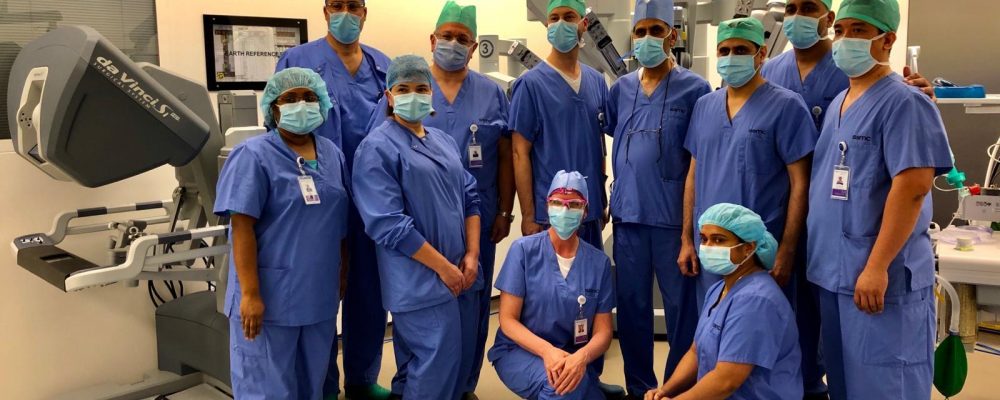Surgeons at Abu Dhabi-based Sheikh Shakhbout Medical City (SSMC), the UAE’s largest hospital for serious and complex care and a joint-venture partnership between Mayo Clinic and Abu Dhabi Health Services Company (SEHA), have performed a robot-assisted surgery, the first-of-its-kind for the integrated facility.
The surgery was performed in conjunction with the launch of a comprehensive robotic surgery program at the hospital to enable and enhance minimally invasive operations, and improve clinical outcomes.
“We are extremely proud to perform our first robotic surgery so soon after opening SSMC,” says Dr Matthew Gettman, Chief Medical Officer of SSMC and the first surgeon to pioneer robotic surgery with Mayo Clinic in the United States. “This is a major achievement in SSMC’s journey towards being a destination for complex care, and complements Abu Dhabi’s efforts in positioning itself as an international healthcare hub, and it is a testament to the benefit of the partnership between SEHA and Mayo Clinic.
“Leveraging Mayo Clinic’s knowledge and expertise, and SEHA’s legacy in the UAE, our experienced and highly trained surgical teams will significantly improve patient outcomes and elevate the standards of care in the UAE and beyond.”
The young Emirati patient suffered from ureteropelvic junction (UPJ)obstruction, a blockage of the tube (ureter) that carry urine from the kidneys to the bladder. The condition can cause pain, infection and sepsis, and if left untreated, can impair the kidneys’ function.
The robotic surgery team, led by Dr Sarfraz Ahmad, a urology consultant at SSMC,performed a robot-assisted pyeloplasty to restore normal kidney drainage.
“The instruments used in robotic surgery provide surgeons with magnified, 3D high definition vision, more comfortable use of instruments and easier access to areas that would’ve been difficult to reach using conventional methods,” says Dr Ahmad. “The patient also benefitted from low risk of post-operative complications and a faster recovery.”
Dr Ahmad explains that in addition to robotic surgery, which offers SSMC patients a minimally invasive alternative, the surgical team also employs Enhanced Recovery after Surgery protocols, an approach that aims to achieve better clinical outcomes.
“By combining robotic and Enhanced Recovery after Surgery approaches, the patient’s experience is dramatically improved,” he says. “The approach leads to faster recovery, early discharge from the hospital, and a reduced risk of complications and readmission.
“Our patient’s surgery went very smoothly,” continued Dr Ahmad. “In addition to good pain control, our young patient was walking the day after the operation and discharged home the following day.”
This first surgery marks the launch of a comprehensive robotic surgery program at SSMC, which will expand over time across other surgical specialities. Dr Ahmad explains that SSMC surgeons go through comprehensive training in accordance with international standards and those set by the maker of the da Vinci robotic surgical system.
“The training program aims to optimize each surgeon’s proficiency by developing their knowledge and skills to use da Vinci technology,” explains Dr Ahmad, “in addition to a simulation-driven and surgeon-led education series focused on clinical application, advanced techniques and procedure refinement.”




